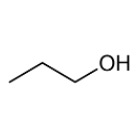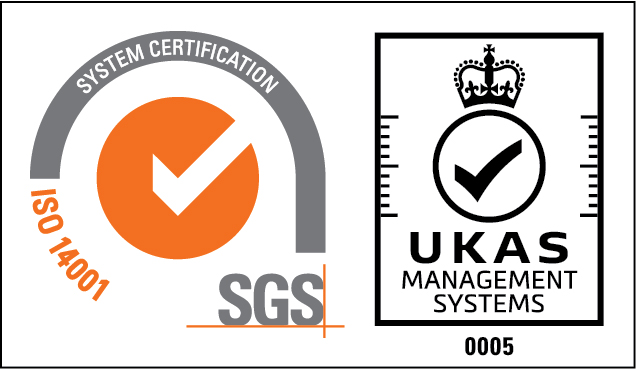What is N-Propanol?
N-propanol (also known as 1-propanol, n-propanol alcohol, propan-1-ol, propyl alcohol) is a primary alcohol in which the OH entity is bonded to a primary carbon atom. N-propanol (CH3CH2CH2OH) is one of two isomers of propanol (C3H8O); the other is 2-propanol ((CH3)2CHOH). It is a clear, colourless transparent liquid that has a typical sharp musty odour that is comparable with the smell of rubbing alcohol.

Miscible in water and freely miscible with all common solvents such as glycols, ketones, alcohols, aldehydes, ethers and aliphatic hydrocarbons, 1-propanol is primarily used as a solvent in the manufacturing of pharmaceuticals, cosmetics, coatings and as a chemical intermediate.
1-propanol technical properties
Chemical and physical properties of n-propanol:
Molecular Formula: CH3CH2CH2OH / n-PrOH
Synonyms: 1-propanol, n-propanol alcohol, propan-1-ol, propyl alcohol, n-PrOH, 1-hydroxypropane, propionic alcohol
Cas Number: 71-23-8
Molecular Mass: 60.096 g/mol-1
Exact Mass: 60.057515 g/mol
Flashpoint: 77 °F / 22 °C
Boiling Point: 207 °F (at 760 mm Hg) / 97.2 °C
Melting Point: -195 °F / -126 °C
Vapour Pressure: 1.99 kPa (at 20 °C)
Water Solubility: miscible
Density: 0.803 g/mL
Log P: 0.329
N-propanol forms naturally during fermentation processes. The human gastrointestinal microbiota can also produce small amounts.
How is N-Propanol produced?
Normal propanol is manufactured by a catalytic hydrogenation of propionaldehyde. The propionaldehyde is itself produced via the oxo process, by hydroformylation of ethylene using carbon monoxide and hydrogen in the presence of a catalyst such as cobalt octacarbonyl or a rhodium complex.
Hydrogenation is the process of adding pairs of hydrogen atoms to unsaturated compounds, with the aim of saturating these compounds.
H2C=CH2 + CO + H2 → CH3CH2CH=O
CH3CH2CH=O + H2 → CH3CH2CH2OH
Handling, Storage & Distribution
Hazards & Toxicity
N-propanol has an NFPA health rating of 1, causing irritation to your eyes, nose, and throat. High exposure can cause burning, nausea, headaches, and dizziness. Vapours of n-propanol are heavier than air and can also irritate and burn. It has a flammability rating of 3, demonstrating that it can be easily ignited under most ambient temperatures. An instability rating of 0 indicates that n-propanol will remain stable, even when under fire conditions.
N-propanol sits in the alcohol and polyol reactive groups. It reacts with alkali metal, nitrides, oxoacids and carboxylic acids. It is not reactive with strong oxidising agents.
It reacts the same way as primary alcohols. It can be converted to alkyl halides (red phosphorus, iodine), acetic acid to give propyl acetate and chromic acids to give propionic acid.
Storage & Distribution
N-propanol alcohol is typically bulk stored within a petrochemical storage facility for regulation. Storage is normally in a cool, dry and well ventilated facility away from oxidising agents. It should be kept out of direct sunlight, heat, and open flames. It can be stored in drummed containers such as iso tanks made of stainless steel, aluminium or carbon steel.
N-propanol alcohol is exported in bulk vessels or tank trucks. For transportation purposes, it is classed as a flammable liquid with a fire hazard rating of 2. A full bulk chemical distributor would export the solvent throughout regions such as the UK, Europe, Africa, and America. It belongs to packing group 2.
Safety & Procedures
Personal protective equipment should be worn to prevent contact with the skin, eyes, nose and mouth, including respirators, safety glasses/goggles, gloves and contact lenses. If contact is made with the skin, immediately wash the contaminated area and clothing should be removed.
Immediately wash the eyes with large amounts of water and seek medical attention immediately. Seek fresh air if large amounts of n-propanol have been inhaled.
Learn more about the different first aid procedures here.
What is 1-propanol used for?
Industry Uses
1-propanol is used as a solvent in the manufacturing of pharmaceuticals, polishes, dental lotions, coatings, lacquers, printing inks, natural gums, pigments, intermediates, dye solutions, antifreeze, fuel additives, paint additives and de-greasing fluids. It is also used as a chemical intermediate to create esters, halides, propyl amines and propyl acetate. The end-user markets of this product are the cosmetics, cleaning, motor, printing, coatings and chemical industries.
1-propanol is also used as fuel in engines due to its high-octane count. However, due to its expensive nature and low energy gains, it is not commonly used.
Commercial Uses
1-propanol is used as a solvent in antifoaming in cosmetics, perfumes, flavours, fragrances, air care products, cleaning and furnishing products, paints, coatings, inks, personal care products, soaps and window cleaner.



